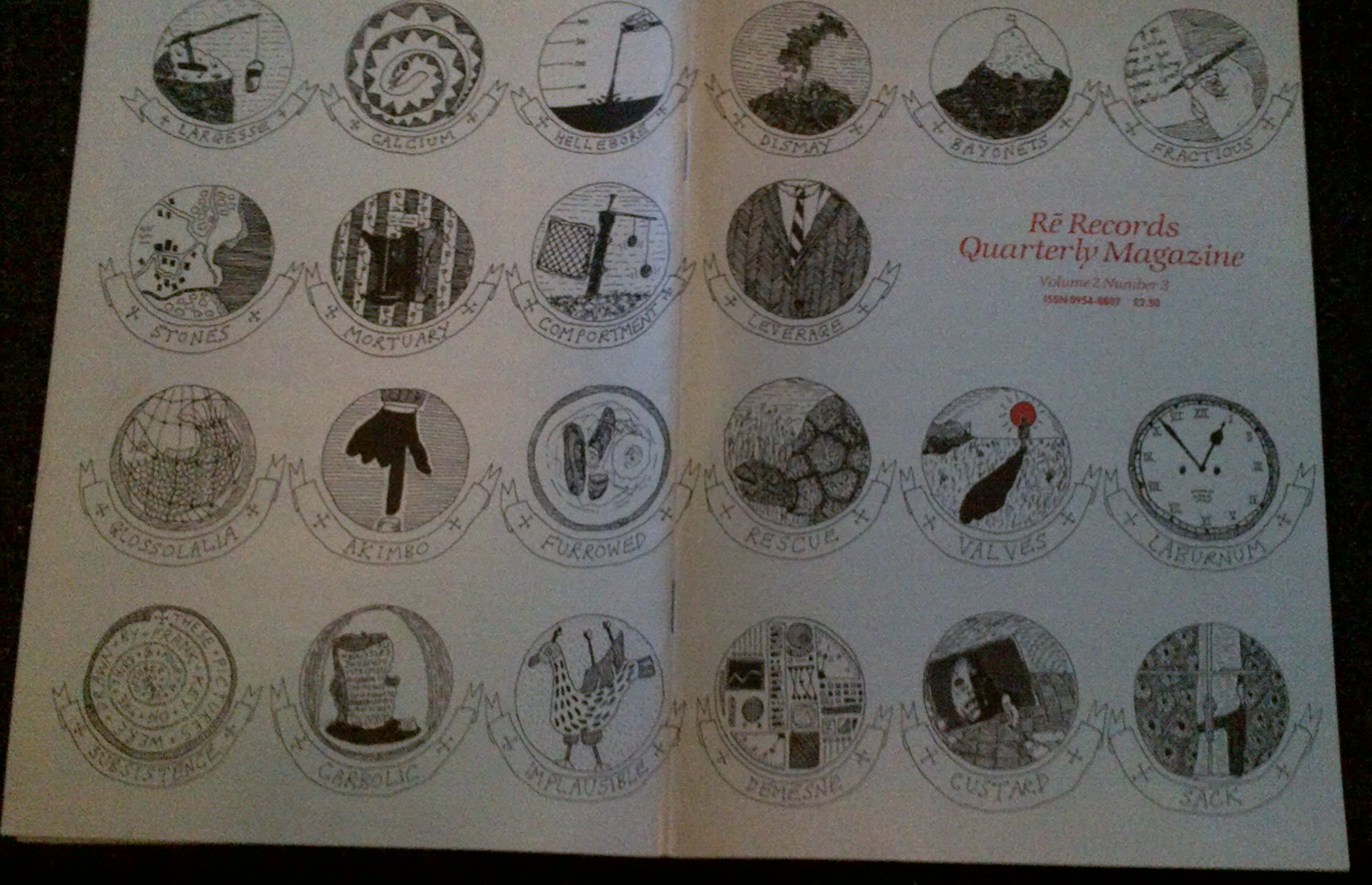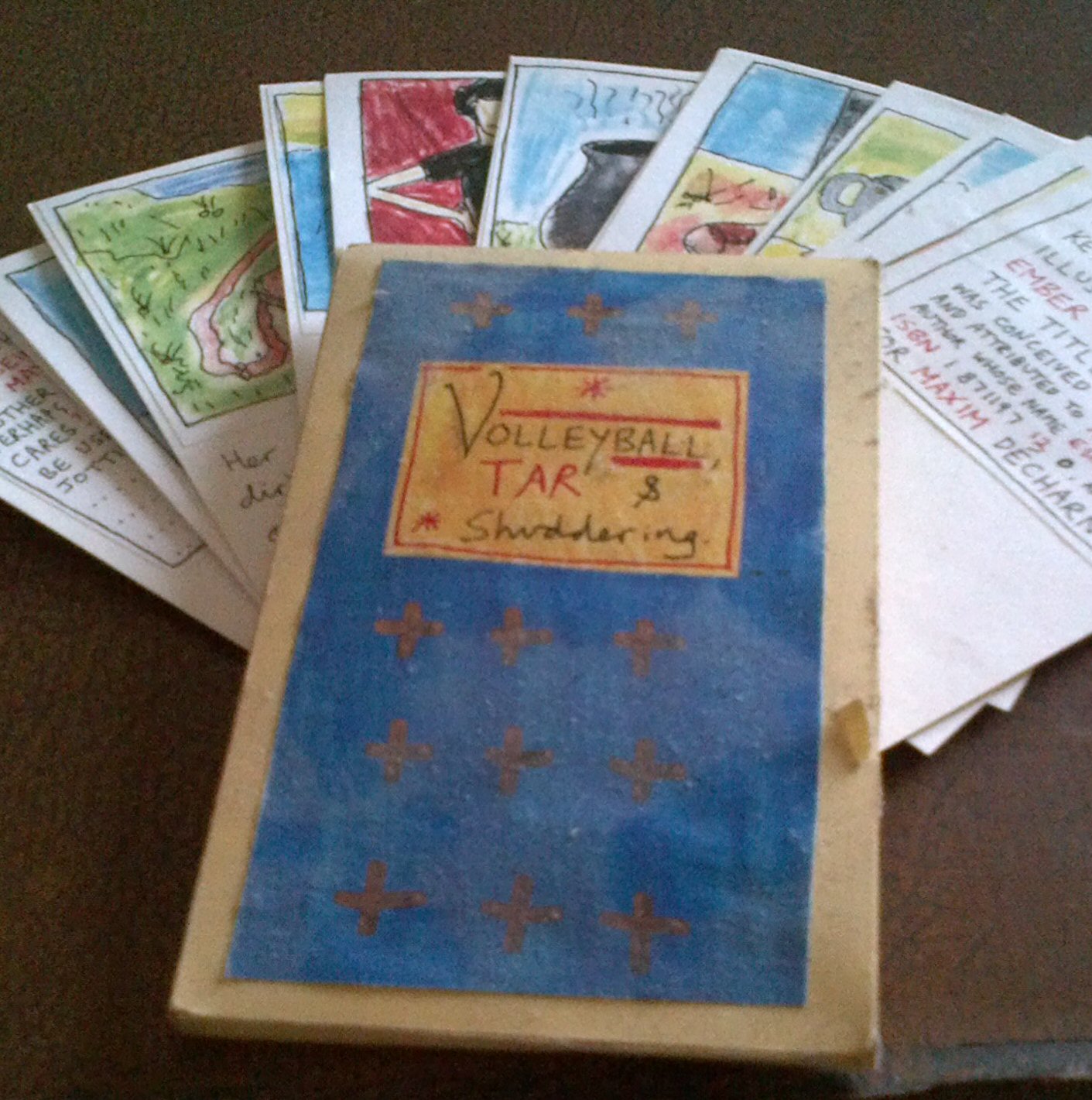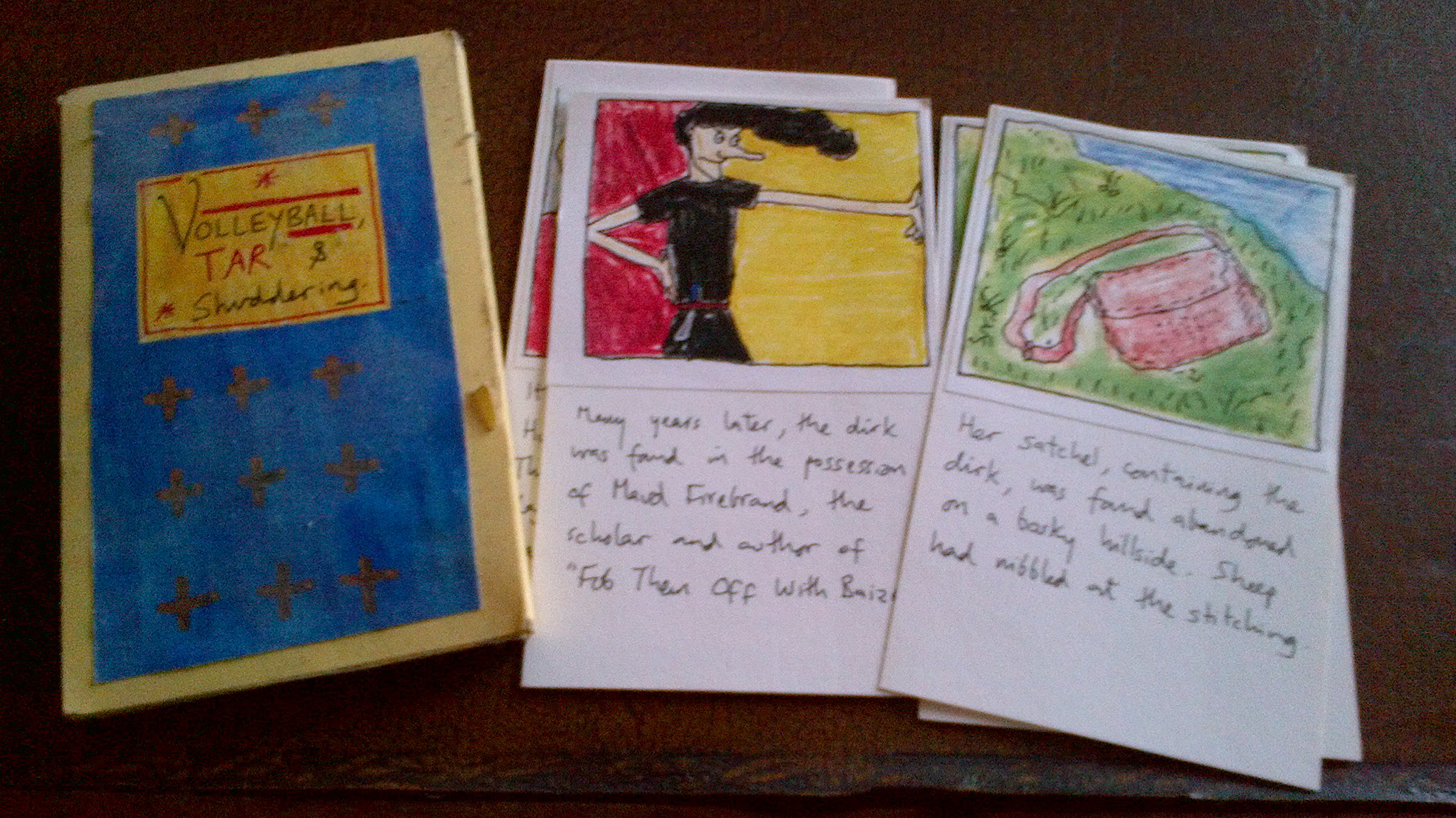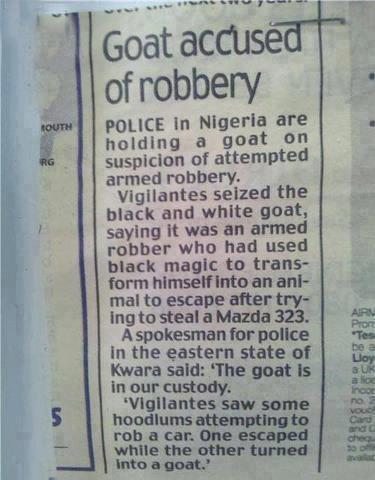Today we don a stout pair of boots and lace them up with due care, having first threaded through the holes strengthened bootlaces of tough material, sisal perhaps. We have not stinted. The aglets, one at each end of each bootlace, are made of iron, forged in a white hot furnace and beaten into shape with a mighty hammer by our favourite blacksmith at his anvil. Remember that hammer.
Boots donned, we step out of the chalet door. The air is cold and clean and bracing. This is Alpine air, of the kind recommended to those who would lie shattered upon balconies. Today, we are anything but shattered. We have had no need to move our mattress on to our chalet balcony. We pull our hat of leather and wool, with its attendant earflaps, more snugly about our head. We light our pipe and puff the acrid Montenegrin tobacco. We gaze up at the summit of a nearby Alp, then scan our eyes a little further down, to where, perched somehow on the slope of the mountain, stands a Schloss.
Later, we shall climb up to the Schloss, and enter its majestic carved wooden portal, the height of twenty men. But first we must descend to the village below, Ack-on-the-Vug, or Vug-on-the-Ack, I can never remember which. It is the kind of village where, at dusk, packs of peasants brandishing pitchforks and tarry burning torches roam the streets, a vigilante force ready to confront werewolves, Golems, mad kings, and similar horrors. Imaginary the horrors may be, but these are violent and ignorant peasants. In glorious morning daylight, they are more tractable, and thus we may prance into the village without fear of harm.
We stop to purchase a pastry from a pie-and-pastry man plying his wares from a cart. There is icing on the pastry and, within, a mash of pulped unidentifiable fruit. We sit on a cold stone slab in the village square and munch the pastry, gathering crumbs on the greaseproof paper bag in which it was sold to us, the bag spread flat on our lap to serve as a napkin. When our munching is done, we scatter the crumbs in an elegant sweeping motion, as food for birds, and then we crumple the bag and toss it into a waste bin. Today there are no birds. Peasants will fall upon the crumbs when our back is turned.
Turned it is, towards a kiosk. The kiosk has a hatch at head height through which, in the interior gloom, can be seen the gaunt and loathsome figure of the couponeer. He is either wall-eyed or pop-eyed. At this late date we can no longer recall which, just as we can no longer recall the name of the village nor of the river, nor of the Alp on which the Schloss was built. The day of which we speak was so long ago, in the last century. The couponeer must be dead by now, and if ever we return to the village we will dance a hoocha upon his grave. He was not a pleasant fellow.
Not pleasant, to be sure, but sadly necessary. We need our coupon, for without it the purpose of our venturing out of our chalet will be lost. Without it, we may as well have remained indoors, or at a pinch upon the balcony. Once out, we must confront the couponeer. He wears a copper cone upon his head, an affectation. We make purchase of our coupon with as few words as possible. The couponeer himself says nothing. Is he mute?
A donkey has been tied to a post some yards away from the kiosk. It wears a ragamuffin air, as donkeys sometimes do. We pat it on its flanks. Its owner, or rider, or master, or torturer, is nowhere to be seen. We are tempted to unloose it from its post and send it off, along the path beside the Vug, or the Ack, until perhaps it comes to a bridge to cross, and in crossing meets a new master, a kindly one, out this morning looking for a stray donkey to pamper. But we suppress the temptation and prance past. It was merely a dream of liberty, a fatuous illusion.
The coupon tucked for safety into one of innumerable pockets of our reindeer-hide anorak so apt for the Alpine climate, we begin to climb the lower slopes of the Alp. We no longer prance, on such a gradient, we trudge. Our sisal bootlaces hold firm. There will be no inelegant pratfalls. As the path becomes steeper, we pant, but still we puff our pipe, indomitable. The sun, still rising, is blinding, and we put on a pair of Guglielmo Boffo sunglasses. They were a gift from Maisie, poor, poor Maisie.
Shortly after midday, we arrive at the Schloss, flash our coupon at the sentry, and enter through the majestic carved wooden portal, the height of twenty men. The carvings are of werewolves, Golems, mad kings, and similar horrors. Long long ago, these were the last things a peasant saw as he was dragged in chains through the portal before being pitched into the Schloss’s oubliette. The oubliette is cemented over now, the cement covered by rugs. The Schloss is now, has been for fifty years, a museum.
We head directly for a gallery on the third floor. It is cold and vast and bare but for a glass case in the middle of the room and a sentry sat on a stool against one wall. The sentry is a cousin of the couponeer, a fellow with a goitre, as affable as his cousin is unpleasant. He murmurs a few polite words of greeting and welcome and hands us an information leaflet. Without looking at it, for we know why we are here, we step over to the glass case. And there it is, returned after theft, the Babinsky hammer. Babinsky was the huge lumbering walrus-moustached psychopath who committed numberless savage enormities. The hammer is the one he used to prosecute dozens upon dozens of those enormities.
We told you to remember the hammer. The man who stole it from and then returned it to the museum was our favourite blacksmith. He used it to hammer our aglets into shape on his anvil.







